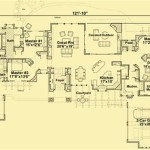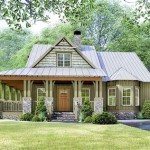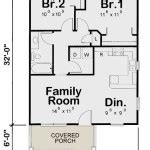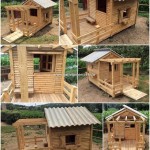Home plans for lake houses are blueprints that guide the construction and design of houses specifically intended for lakeside living. These plans incorporate unique considerations and features tailored to maximize the enjoyment and functionality of a home near a lake.
From the placement of windows to the choice of exterior materials, every aspect of a lake house plan is meticulously designed to enhance the waterfront experience. For example, expansive windows allow for breathtaking views of the lake, while decks and patios extend living spaces outdoors, providing seamless transitions between the home and the natural surroundings.
In the following sections, we will delve deeper into the key elements of home plans for lake houses, exploring the various design options, functional considerations, and essential features that make these homes truly special.
When designing home plans for lake houses, several important points should be considered:
- Maximize lake views
- Provide outdoor living spaces
- Consider water access
- Choose durable materials
- Plan for storage
- Ensure energy efficiency
- Address flood risks
- Comply with local regulations
By carefully considering these factors, you can create a lake house that is both beautiful and functional, providing a lifetime of enjoyment.
Maximize lake views
One of the primary goals of home plans for lake houses is to maximize lake views. This can be achieved through a variety of design strategies, including:
- Large windows and glass doors: Expansive windows and glass doors allow for unobstructed views of the lake from multiple rooms in the house. Floor-to-ceiling windows are a popular choice for lake houses, as they provide stunning panoramic views and create a seamless connection between the interior and exterior spaces.
- Elevated decks and balconies: Decks and balconies that are elevated above the ground level offer elevated views of the lake. This is especially effective for homes that are situated on sloping lots or have limited lake frontage. Covered decks and balconies can also be used to create shaded outdoor living spaces that are protected from the sun and rain.
- Open floor plans: Open floor plans eliminate walls and partitions between different living areas, creating a more spacious and airy feel. This allows for better flow of natural light and provides more opportunities to enjoy lake views from various vantage points within the home.
- Strategic placement of rooms: The placement of rooms within a lake house can also be optimized to maximize lake views. For example, the living room, dining room, and master bedroom are often positioned on the side of the house that faces the lake, ensuring that these primary living spaces have the best views.
By carefully considering these design strategies, it is possible to create a lake house that offers breathtaking views of the surrounding natural beauty, providing a truly immersive and enjoyable waterfront living experience.
Provide outdoor living spaces
Outdoor living spaces are an essential part of any lake house. They provide a place to relax, entertain guests, and enjoy the beautiful scenery. When designing outdoor living spaces for lake houses, there are a few key things to consider:
- Location: The location of your outdoor living spaces is important. You want to choose a spot that is both private and has good views of the lake. If possible, orient your outdoor living spaces to take advantage of the prevailing breezes.
- Size: The size of your outdoor living spaces will depend on how you plan to use them. If you entertain frequently, you may want a larger space with a variety of seating options. If you just want a place to relax and enjoy the views, a smaller space may be sufficient.
- Amenities: The amenities you include in your outdoor living spaces will also depend on how you plan to use them. If you like to cook outdoors, you may want to include a grill or outdoor kitchen. If you enjoy entertaining, you may want to include a fire pit or hot tub. Other popular amenities for lake house outdoor living spaces include decks, patios, screened porches, and boat docks.
By carefully considering these factors, you can create outdoor living spaces that are both beautiful and functional, providing a lifetime of enjoyment.
Consider water access
Water access is a key consideration when designing home plans for lake houses. The type of water access you have will determine the types of activities you can enjoy and the design of your home.
There are three main types of water access for lake houses:
- Public access: Public access means that your lake house is located on a public lake or river. This type of access is typically the most affordable, but it also means that you will share the lake with other boaters and swimmers.
- Private access: Private access means that your lake house is located on a private lake or river. This type of access is more expensive than public access, but it also means that you will have more privacy and control over the use of the lake.
- No access: No access means that your lake house is not located on a lake or river. This type of access is the least expensive, but it also means that you will not be able to enjoy water activities from your home.
If you are considering building a lake house, it is important to carefully consider the type of water access you want. This will help you determine the best location for your home and the types of activities you can enjoy.
In addition to the type of water access, you should also consider the following factors when planning your home:
- The depth of the water: The depth of the water will determine the types of boats you can use and the activities you can enjoy. If you want to swim or boat, you will need to make sure that the water is deep enough.
- The clarity of the water: The clarity of the water will determine how well you can see underwater. If you enjoy fishing or snorkeling, you will want to make sure that the water is clear.
- The current: The current of the water can make it difficult to swim or boat. If you are planning to build a dock or boat ramp, you will need to make sure that the current is not too strong.
By carefully considering all of these factors, you can ensure that your lake house is perfectly suited to your needs.
Choose durable materials
When choosing materials for your lake house, it is important to select those that are durable and can withstand the harsh conditions that come with being located near water. This includes exposure to sun, rain, wind, and moisture. Some of the best materials for lake houses include:
- Fiber cement siding: Fiber cement siding is a popular choice for lake houses because it is durable, low-maintenance, and fire-resistant. It is also resistant to moisture and insects, making it a good choice for homes that are located in humid or wooded areas.
- Vinyl siding: Vinyl siding is another good choice for lake houses because it is durable, low-maintenance, and affordable. It is also resistant to moisture and fading, making it a good choice for homes that are located in sunny or rainy climates.
- Stone veneer: Stone veneer is a natural material that is both durable and beautiful. It is a good choice for homes that are located in areas with a lot of stone, as it can help the home to blend in with its surroundings. However, stone veneer is more expensive than other siding options.
- Brick: Brick is a classic material that is both durable and beautiful. It is a good choice for homes that are located in areas with a lot of brick, as it can help the home to blend in with its surroundings. However, brick is more expensive than other siding options.
In addition to the exterior materials, it is also important to choose durable materials for the interior of your lake house. This includes flooring, countertops, and cabinets. Some of the best materials for the interior of a lake house include:
- Tile flooring: Tile flooring is a good choice for lake houses because it is durable, easy to clean, and water-resistant. It is also available in a variety of styles and colors, so you can find a tile that matches the dcor of your home.
- Laminate flooring: Laminate flooring is another good choice for lake houses because it is durable, easy to clean, and affordable. It is also resistant to moisture and fading, making it a good choice for homes that are located in sunny or rainy climates.
- Granite countertops: Granite countertops are a good choice for lake houses because they are durable, heat-resistant, and easy to clean. They are also available in a variety of colors and patterns, so you can find a granite countertop that matches the dcor of your home.
- Quartz countertops: Quartz countertops are another good choice for lake houses because they are durable, non-porous, and easy to clean. They are also available in a variety of colors and patterns, so you can find a quartz countertop that matches the dcor of your home.
By choosing durable materials for both the exterior and interior of your lake house, you can ensure that your home will withstand the test of time and provide you with years of enjoyment.
Plan for storage
Lake houses often have a lot of seasonal items, such as fishing gear, boating equipment, and lawn furniture. It is important to plan for adequate storage space to keep these items organized and out of the way. Some ideas for storage in lake houses include:
- Closets: Closets are a great way to store items that are not used on a regular basis. They can be used to store seasonal items, as well as items that are not used every day, such as extra bedding and linens.
- Cabinets: Cabinets are another good option for storage in lake houses. They can be used to store items that are used more frequently, such as dishes, glasses, and cookware. Cabinets can also be used to store cleaning supplies and other household items.
- Shelves: Shelves are a versatile storage solution that can be used to store a variety of items. They can be used to store books, magazines, games, and other items that need to be kept organized and accessible.
- Baskets and bins: Baskets and bins are a great way to store small items that would otherwise be difficult to keep organized. They can be used to store toys, games, crafts, and other items that need to be kept tidy.
By planning for adequate storage space, you can keep your lake house organized and clutter-free. This will help you to enjoy your lake house more and make it a more comfortable and relaxing place to spend time.
In addition to the storage ideas listed above, there are a few other things you can do to maximize storage space in your lake house:
- Use vertical space: Vertical space is often overlooked when it comes to storage. However, it can be a valuable asset in a lake house. Shelves, cabinets, and other storage solutions can be stacked vertically to maximize storage space.
- Use multi-purpose furniture: Multi-purpose furniture can be a great way to save space in a lake house. For example, a coffee table with built-in storage can be used to store blankets, pillows, and other items.
- Declutter regularly: Decluttering regularly can help to reduce the amount of stuff you have and free up storage space. Donate or discard any items that you no longer use or need.
By following these tips, you can plan for adequate storage space in your lake house and keep it organized and clutter-free.
Ensure energy efficiency
Energy efficiency is an important consideration for any home, but it is especially important for lake houses. Lake houses are often located in remote areas where access to energy can be limited and expensive. Additionally, lake houses are often used seasonally, which means that they can be vacant for long periods of time. This can lead to energy waste if the home is not properly sealed and insulated.
There are a number of ways to ensure energy efficiency in home plans for lake houses. One important factor is the orientation of the home. Homes that are oriented to take advantage of natural sunlight can reduce the need for artificial lighting and heating. Additionally, homes that are built with energy-efficient windows and doors can help to keep the heat in during the winter and the cool air in during the summer.
Another important factor is the insulation of the home. Proper insulation can help to reduce heat loss in the winter and heat gain in the summer. Insulation can be installed in the walls, ceiling, and floor of the home. It is important to choose an insulation material that is appropriate for the climate and the type of home.
Finally, it is important to choose energy-efficient appliances and fixtures for the home. Energy-efficient appliances use less energy to operate, which can save money on utility bills. Energy-efficient fixtures, such as LED light bulbs, can also help to reduce energy consumption.
By following these tips, you can ensure that your lake house is energy efficient and comfortable to live in all year round.
Address flood risks
Lake houses are particularly susceptible to flood damage due to their proximity to water. It is important to take steps to address flood risks when designing home plans for lake houses. One important factor to consider is the elevation of the home. Homes that are built on higher ground are less likely to be flooded. If possible, choose a building site that is above the flood plain.
Another important factor to consider is the drainage around the home. Proper drainage can help to divert water away from the home and reduce the risk of flooding. Make sure that gutters and downspouts are properly installed and that they direct water away from the foundation of the home. Additionally, consider installing a sump pump to remove water from the basement or crawl space in the event of a flood.
It is also important to choose flood-resistant materials for the construction of your lake house. Avoid using materials that are easily damaged by water, such as drywall and carpeting. Instead, opt for materials such as tile, vinyl, and concrete that are more resistant to water damage.
Finally, it is important to have a plan in place for what to do in the event of a flood. This plan should include evacuation routes, a list of important contacts, and a plan for securing your belongings.
By following these tips, you can help to reduce the risk of flood damage to your lake house and ensure the safety of your family and belongings.
Comply with local regulations
When designing home plans for lake houses, it is important to comply with all local regulations. These regulations may vary from one jurisdiction to another, but they typically address issues such as setbacks, height restrictions, and building codes. It is important to be aware of these regulations before you begin the design process, as they can impact the size, shape, and overall design of your home.
One of the most important local regulations to consider is the setback requirement. Setbacks are the minimum distances that must be maintained between your home and the property lines. These setbacks help to ensure that there is adequate space for driveways, walkways, and other amenities, and that your home does not encroach on your neighbors’ property. Setback requirements can vary depending on the zoning of your property, so it is important to check with your local zoning board to determine the specific requirements for your area.
Another important local regulation to consider is the height restriction. Height restrictions are the maximum heights that are allowed for buildings in a particular area. These restrictions are typically in place to protect the views of neighboring properties and to ensure that buildings do not become too tall and unsightly. Height restrictions can vary depending on the zoning of your property, so it is important to check with your local zoning board to determine the specific requirements for your area.
Finally, it is important to comply with all local building codes. Building codes are designed to ensure that buildings are safe and habitable. They cover a wide range of topics, including structural requirements, electrical requirements, and plumbing requirements. It is important to make sure that your home plans comply with all applicable building codes, as this will help to ensure that your home is safe and up to code.
By complying with all local regulations, you can avoid costly delays and fines, and ensure that your home is built to the highest standards of safety and quality.










Related Posts








